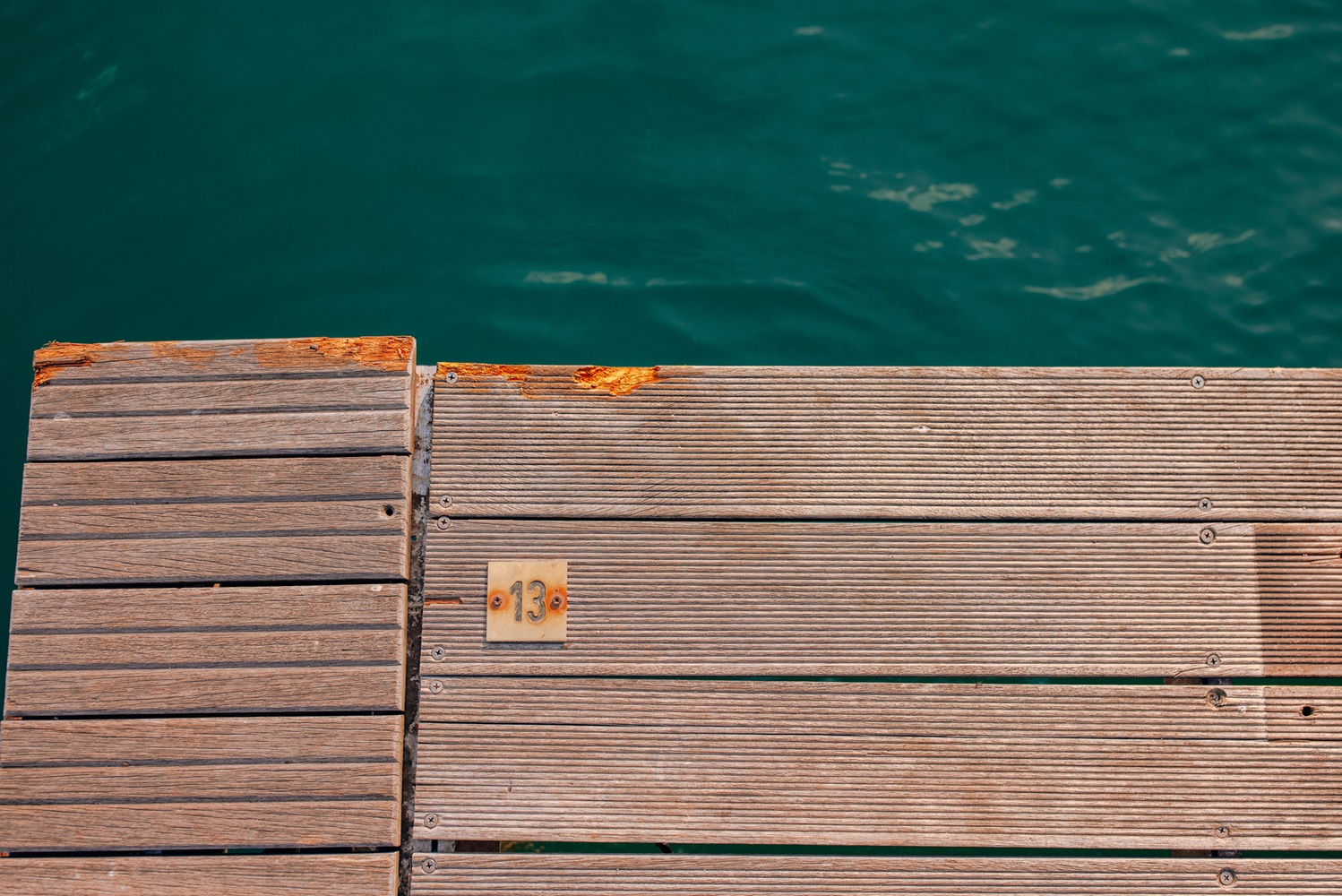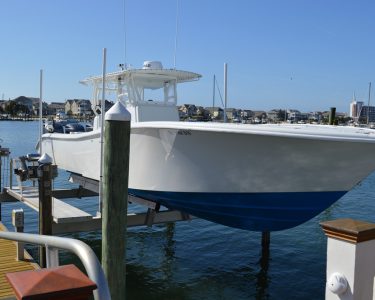Living by the water is a gorgeous lifestyle, but that comes with a tradeoff: the dangers of hurricane season. Astronomical winds, biblical floods, massive hail and crackling lighting are all threats to your life and property. That’s why a marine contractor in Wilmington, NC can play a huge role in mitigating these risks.
The wind and water combine forces to hit waterfront homes the hardest. Fortunately, there are proven ways to protect your property before the next storm arrives. If you’re looking for a broader checklist, our article on preparing your home’s exterior for storm season covers essential steps every homeowner should take.
The right exterior improvements can dramatically reduce storm damage. Moreover, these upgrades protect your investment for years to come.
Below are ten detailed, actionable ways to hurricane-proof your waterfront home exterior. Each technique is based on methods designed to withstand the harsh conditions of coastal living.
1. Install Storm-Resistant Windows and Shutters
A hurricane will turn various debris and benign items into dangerous, high speed projectiles. Standard glass can shatter under impact, which allows wind and water to enter your home. Hurricane glass is laminated and has many layers, multiplying the level of force needed to break them.
This design prevents sudden pressure changes inside your home, protecting the structure from damage.
Shutters provide an extra line of defense against flying debris. Roll-down shutters can be deployed quickly before a storm hits. Meanwhile, accordion-style shutters fold away neatly when not in use.
In high-salt environments, it’s important to choose the right materials. Powder-coated aluminum or stainless hardware prevents corrosion over time.
Regular inspections are essential to make sure seals remain intact. Additionally, moving parts need to operate smoothly. Salt air can cause hinges and tracks to seize up over time. Seasonal lubrication is recommended.
A marine contractor can suggest products specifically designed for the conditions around Wilmington NC.
2. Upgrade to a Reinforced Roofing System
The force from all those hurricane winds gets funneled to your roof. So, you need to reinforce it with the right materials. Valid choices include wind-rated asphalt shingles, standing seam metal panels, or concrete tiles.
Metal roofs are particularly popular along the coast. They’re durability and resist uplift forces.
The roof decking beneath the surface should be securely fastened. Use ring-shank nails or screws rather than staples for better holding power. Furthermore, a waterproof underlayment hedges your property against wind-driven rain.
Roof-to-wall connections are the heart of structural integrity. Hurricane straps or clips help anchor the structure to the home’s walls. They distribute wind loads more evenly across the building.
In coastal areas, salt exposure can shorten the life of certain materials. Choosing marine-grade fasteners and sealants ensures your roof holds up year after year.
A local marine contractor can coordinate with roofing specialists. This teamwork ensures both structural integrity and corrosion resistance are built into your system.
3. Elevate and Fortify Decks and Docks
Storm surge and wave action pose massive risks to waterfront decks and docks. Raise them above the forecasted surge level, so water passes beneath them.
This approach reduces the force of moving water against your structures. It also minimizes damage from floating debris.
Marine-grade lumber, composite decking, and stainless-steel hardware are essential. They’ll resist water damage and gradual corrosion. For more targeted strategies specific to deck structures, see our guide on storm-proofing marine decks in Wilmington.
Driven pilings offer more stability than surface-mounted posts. Drilled deep into the seabed, they anchor the structure against shifting sands and strong currents. Cross-bracing between pilings helps them withstand lateral forces even better.
Working with a marine contractor in Wilmington NC ensures these upgrades meet structural requirements. They also understand local permitting rules and environmental regulations.
Contractors can integrate floating dock sections where appropriate. These sections rise and fall with water levels rather than resisting them. This makes a significant difference during a major storm. Learn more about the benefits of floating docks in marine construction and how they perform during storms.
4. Secure and Strengthen Garage Doors
Too many people overestimate their garage door’s durability during a hurricane. If the garage door fails, high winds get inside the home. This increases internal pressure and risks roof or wall collapse.
High-wind-rated garage doors are reinforced with heavier-gauge steel. They also feature extra bracing and stronger tracks. If replacing the door isn’t an immediate option, retrofitting kits can help.
These kits include vertical braces and upgraded hardware to improve resistance. They’re often more affordable than full door replacement.
For coastal homes, corrosion is a major concern. Stainless steel rollers and galvanized steel components help maintain smooth operation. They also preserve structural integrity over time.
Sealing the bottom of the door with a storm-rated threshold prevents water intrusion. This protection works against both wind-driven rain and surge.
Periodic inspections before hurricane season are crucial. They can catch early signs of wear so problems can be addressed before the next storm arrives.
5. Add Wind-Resistant Siding and Wall Systems
The first part of your home hurricane winds make contact with is the siding. It’s the frontline in the fight against wind damage. Materials like fiber cement, reinforced vinyl, or engineered wood can resist high-speed impacts. They also handle prolonged exposure to moisture.
Fiber cement is particularly effective in coastal areas. It’s highly resistant to rot, warping, and termites, which are common issues near the water.
Proper installation is as important as material choice. Panels should be fastened with stainless-steel nails or screws. Always follow the manufacturer’s spacing guidelines to optimize wind defenses.
Sealants rated for coastal use should be applied at joints. This prevents water infiltration during heavy storms.
Some homeowners choose insulated siding systems for added benefits. These provide both impact resistance and energy efficiency. They also help regulate indoor temperatures year-round.
A contractor experienced with coastal building can ensure proper installation. They’ll make sure siding handles both wind uplift and salt exposure. This keeps your home’s exterior protected for years to come.
6. Upgrade Piers, Gazebos, and Waterfront Structures
Detached waterfront structures like piers and gazebos face the full force of hurricane winds and waves. Hurricane bracing systems can keep them intact during severe weather events.
These structures are often the first to show damage during storms. But, proper reinforcement can help them survive even major hurricanes.
Driven pilings are the stability gold standard due to how deep they get. Cross-bracing between pilings prevents lateral sway during high winds.
Hurricane straps at connection points keep structural members secured. Marine-grade lumber, stainless fasteners, and UV-resistant sealants help structures withstand years of coastal exposure.
A marine contractor in Wilmington NC can check your existing waterfront structures. They’ll recommend targeted upgrades based on your specific situation.
Contractors also ensure compliance with local building codes and environmental regulations.
7. Anchor Outdoor Equipment and Fixtures
Hurricane winds can launch items like HVAC units, propane tanks, and fuel storage containers at breakneck speeds. Anchoring them securely is a safety measure and often a code requirement in coastal areas.
Elevated platforms help protect equipment from flooding and storm surge. Meanwhile, anchoring straps or bolted brackets keep them from shifting. All hardware should be corrosion-resistant to resist the salty air.
Connections should be inspected annually for wear and tear. Replace any hardware showing signs of corrosion or weakness.
Even smaller items need attention. Heavy grills, patio furniture, and outdoor decorations should have designated storage or tie-down points.
Securing everything in advance reduces cleanup after a storm. It also minimizes damage to both your property and neighboring structures.
8. Install Proper Drainage and Grading Systems
Flooding is one of the most damaging aspects of hurricanes. Poor drainage can lead to standing water around your home. Foundations get weaker and mold starts to grow.
These are more long-term problems than wind damage. That’s why effective drainage is so important for any home, but doubly so for a waterfront home
A well-designed drainage plan uses several elements to manage water flow. French drains, swales, and permeable pavers direct water away from the structure. In some cases, regrading the property to improve slope prevents pooling.
Waterfront homes often need extra considerations due to tidal influences. The drainage system must handle stormwater and potential backflow from nearby water bodies.
Working with a contractor familiar with local conditions ensures proper system design. They understand how tides and storm surge affect drainage in your area.
Regular maintenance keeps these systems functioning when they’re needed most. Clean gutters, check drain outlets, and remove debris that could cause blockages.
9. Use Corrosion-Resistant Fasteners and Materials
The salty air along the North Carolina coast accelerates corrosion in metal components. This can weaken the structural integrity of your home over time. Choosing corrosion-resistant materials from the start extends the life of every exterior feature.
Standard steel fasteners can fail within just a few years near the ocean. Marine-grade materials are worth the extra investment.
Stainless steel, hot-dip galvanized steel, and marine-grade aluminum are ideal choices. Composite materials for decks, railings, and trim resist both rot and rust. For a deeper dive into eco-friendly material choices, see our piece on sustainability in marine construction.
Composite materials for decks, railings, and trim resist both rot and rust. This reduces the need for frequent replacement and ongoing maintenance.
Even with corrosion-resistant materials can fail if they’re not inspected regularly. Spotting early signs of rust or material breakdown allows for timely repairs.
This preventive approach stops small issues from becoming major structural concerns. It also helps maintain your home’s hurricane resistance over time.
10. Partner with a Local Marine Contractor for Structural Inspections
Even the best-built waterfront home benefits from regular professional inspections. A local marine contractor understands the specific threats in the Wilmington NC area. They know storm surge patterns and the effects of seasonal wind shifts.
Professional eyes spot the problems laypeople can miss. Early detection saves money and prevents safety hazards.
Pre-season inspections can identify weaknesses in docks, bulkheads, seawalls, and pilings. Post-storm assessments ensure that any hidden damage is addressed before it worsens. If you’re managing or building waterfront structures, our tips on preparing your marine construction site for Wilmington’s storm season can help you plan effectively.
Contractors can also tell you how to upgrade and meet current coastal building codes. These codes may have changed since your home was built.
A long-term relationship with a trusted marine contractor translates into continuous evaluation. Your home stays maintained with hurricane preparedness in mind.
This proactive approach is one of the most effective ways to protect your investment. It also provides peace of mind during hurricane season.
Protecting Your Waterfront Home in Wilmington NC
Hurricane-proofing your waterfront home exterior is an ongoing process that requires attention and maintenance.
Each of these strategies works together to create a resilient barrier against storms, from reinforced windows and roofs to elevated docks and professional inspections.
Homeowners along the North Carolina coast face unique challenges. But, with the right materials, construction methods, and local expertise, protecting your home is possible.
For docks, piers, bulkheads, and other marine structures, working with an experienced marine contractor in Wilmington NC is essential. They ensure every upgrade is designed for the realities of coastal living.
Taking action before hurricane season arrives gives you the best protection. Start with the most vulnerable areas of your home and work systematically through these recommendations.





